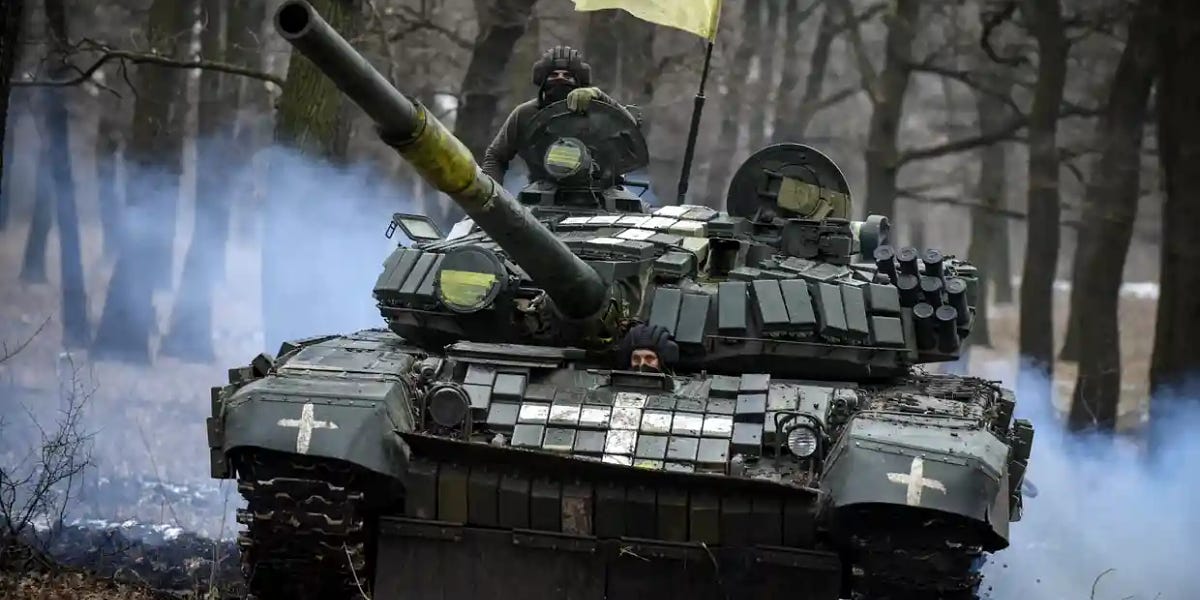GrauGeist
Generalfeldmarschall zur Luftschiff Abteilung
It almost seems like Ukraine is holding off on it's offensive because the suspense is causing the Russians to implode.
Follow along with the video below to see how to install our site as a web app on your home screen.
Note: This feature may not be available in some browsers.
Ad: This forum contains affiliate links to products on Amazon and eBay. More information in Terms and rules
I think it would be better. No self respecting aa rocket wants to explode on that. Beside the heat sensors would not see it a a target i think.The Il-2 couldn't do a worse job
Heat-seeking weapons should be able "see" a piston engine's exhaust.I think it would be better. No self respecting aa rocket wants to explode on that. Beside the heat sensors would not see it a a target i think.
Ahh. Still i think it would have a harder time with a colder but much more maneuverable frame. And also so very much slower. Like trying to shoot down a Fokker triplane with a Tomcat. Or am i wrong about that too? Just gesting offcourse but sometimes i do wonder if slower isnt better. And no turbine powered helis are not allowed as in too hot.Heat-seeking weapons should be able "see" a piston engine's exhaust.

Didn't work for the Lysander...Ahh. Still i think it would have a harder time with a colder but much more maneuverable frame. And also so very much slower. Like trying to shoot down a Fokker triplane with a Tomcat. Or am i wrong about that too? Just gesting offcourse but sometimes i do wonder if slower isnt better. And no turbine powered helis are not allowed as in too hot.
A jet engine's exhaust is about 1,200°F to 1,400°F (on average) and a piston engine's exhaust is right about 1,200°F on average.Ahh. Still i think it would have a harder time with a colder but much more maneuverable frame. And also so very much slower. Like trying to shoot down a Fokker triplane with a Tomcat. Or am i wrong about that too? Just gesting offcourse but sometimes i do wonder if slower isnt better. And no turbine powered helis are not allowed as in too hot.

That's odd - it works fine for me.That was a weird link and it caused a my device to lock up and then snap a photo.

0:06 what tank is that at 0:06?
View attachment 722902
It might be a Leopard 2 like those in the vid, but the turret looks more rounded, like a Leopard 1.
View attachment 722903
The Leo1 has been promised by the Belgiums and others, but I don't think they've been delivered yet.
All the nitwits that voted for him will eventually wonder where their freedoms went.Damn!! Was hoping for change which then might have aided Ukraine situation more.

Turkey election results updates: Erdogan declared run-off winner
Erdogan secures presidency for five more years after second-round vote, defeating Kemal Kilicdaroglu.www.aljazeera.com
... by DAY or .. by NIGHT ...Didn't work for the Lysander...
Well… gobble gobble.Damn!! Was hoping for change which then might have aided Ukraine situation more.
But think of the costs of a full-on conflict. NATO is fighting a proxy war with Russia right now. As costly as it is, far less so than WWIII.
A jet engine's exhaust is about 1,200°F to 1,400°F (on average) and a piston engine's exhaust is right about 1,200°F on average.
On a motor vehicle, the temps at the tail pipe are much less, because the exhaust travels from the exhaust ports down a manifold, then to a catalytic converter (if it's a newer vehicle), through a muffler and then out the tail pipe.
On an airplane, the exhaust travels from the ports to "stacks" or a short exhaust manifold (like on a radial) that offer very little back pressure, so the temps will still be considerable.
I wonder by how much, the exhaust temps are reduced, as it exits the pipe?On radials you can reduce the temperature considerably by using exhaust powered cooling airflow like on the Otter and Caribou but then you lose the exhaust thrust and add drag from the much larger tailpipes